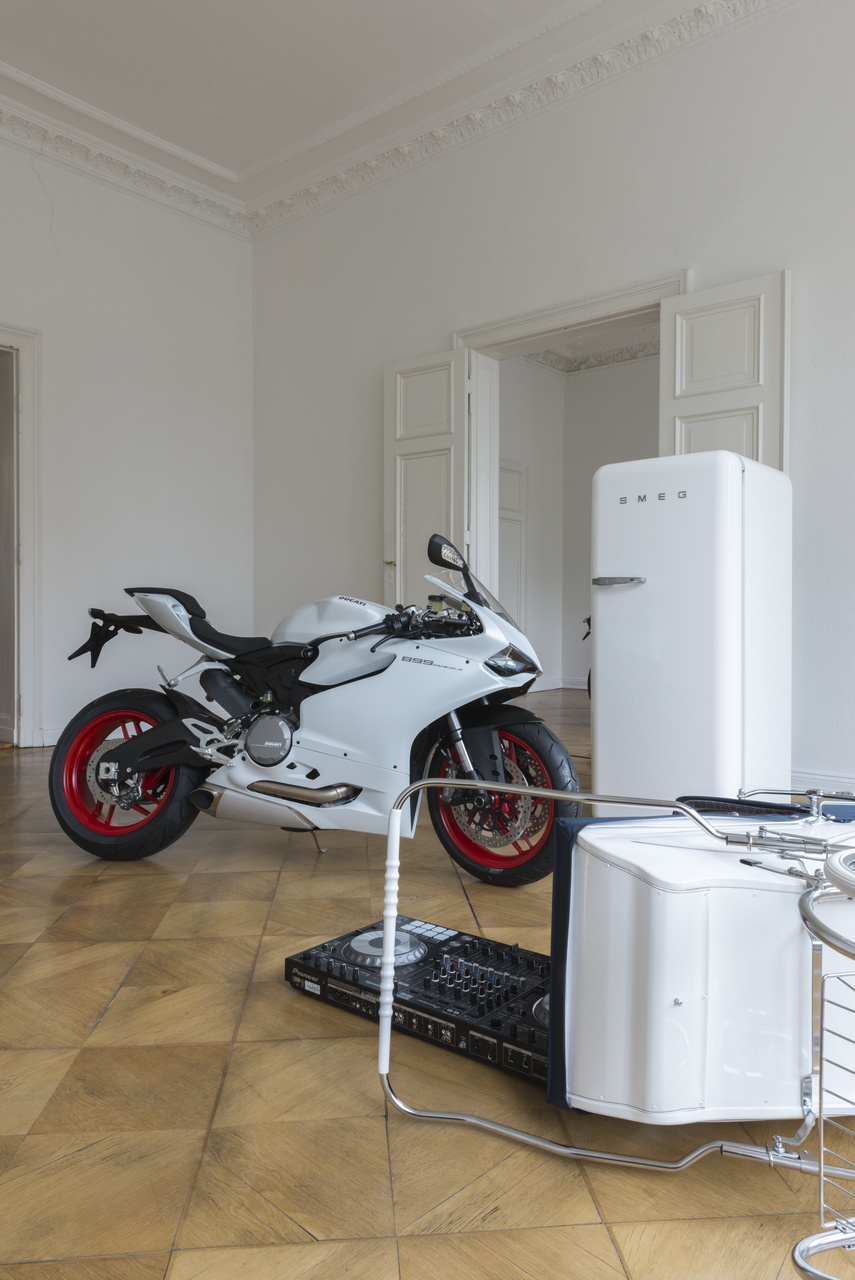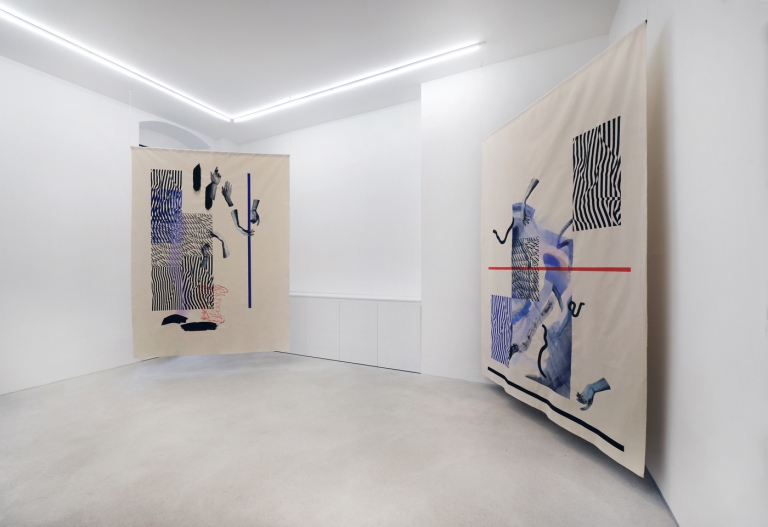Artist: Merlin Carpenter
Exhibition title: Poor Leatherette
Venue: MD 72, Berlin, Germany
Date: May 3 – June 13, 2015
Photography: images courtesy of the artist and MD 72, Berlin
Since the 1980s the readymade has been seen as a reflection on the commodity fetishism of luxury goods. This show has a different approach, while still referring to the history of the found object.
Marx defined luxury production as all production which is not required for the reproduction of labour-power, i.e. not required for keeping alive the worker and her family. Luxury goods cannot do this and “relative surplus value” is only increased indirectly when means of worker subsistence go down in price. Luxury goods are not part of the consumption of the worker herself or the materials of her labour. And the luxury sector might have proportionally grown but is also not decisive for the production and reproduction of surplus value; in other words to understand the workings of the economy the luxury sector can actually be left out entirely, because it does not affect the crucial lever of that economy.
Value cannot jump back into action from its manifestation in a leisure motorbike or a retro fridge. It is utterly dead here and forms no further value of any kind. It is no longer capital. There might be a retained reproductive function of a fridge or a pram, but it is here dressed up in the decorative and the nostalgic. The luxury item has to do with the capitalist cycle and labour in an analogous way, perhaps even a systematically functional way, but these luxury expenditures are a non-issue for the success or failure of valorisation. So in this sense the luxury status symbol is not a serious starting point from which to analyse the commodity, capitalist exchange or even the object itself.
So firstly, these items are not proper commodities but luxuries already disengaged from further exchange. They are the rewards of the capitalist manager’s husband or daughter, and deductions from productive labour. Secondly, there is a myth that Koons or Haim Steinbach readymades speak about fetishism. German Marxist Michael Heinrich re-assigns the term “fetishism” toward capitalism itself – that there is a fetishistic belief that capitalism is both eternal and unchangeable, that these relations are necessary for humankind. For example stocks and bonds are fetishised as parallel sources of value. This is a mystification that is deeper, more integral, and more stubborn than the role of the luxury object to mystify or, in the case of an artwork, “de-mystify”.
Though Marx famously speaks about commodity fetishism at the start of Capital, this is slightly misleading, he is trying to explain a fetishisation of exchange value and not an object. The commodity could equally be labour. “There is no ‘secret’ behind possessing expensive commodities as status symbols that needs to be deciphered… Fetishism does not consist of products of labor being regarded as objects of value – in bourgeois society, products of labor that are exchanged are in fact objects of value – but this objectivity of value is considered a ‘self evident and nature-imposed necessity’.” (Michael Heinrich quoting Marx). Fetishism is the naturalisation of the necessity of this objective value.
Although the labour involved in making these amazing goods has been erased, nevertheless we could imagine the collective labour that goes into them as a metaphor only for how labour could exist in the future, exactly because they are so amazing. The readymade dramatises the role of the artist as a quasi-manager who exploits this dead labour, but also maybe could re- politicise it. This would depend on the extent to which she is able to demarcate a strict limit: it cannot signify as labour and yet memorialises that failure to register.
In Poor Leatherette I’m trying to use the extremely conservative irrelevance of this readymade status symbol in art, and, rather than just ironise it as I did previously with works like the speedboat or Mercedes-Benz mountain bikes, make its irrelevance start to dance around in a series of absurd tableaux in MD 72. By combining the single works into non- allegorically allegorical “displays” I seek to confound these products into a hieroglyph. There is a difference proposed between first order allegory or for that matter mere institutional critique, and a second order allegory which deliberately exaggerates reference. The “internet of things” is usually conceived as household devices communicating with each other via the internet, and it is a journalistic fantasy. Here I want to propose a more fantastic internet of things where the objects (Gegenstände) communicate by mute non-narrative posing on the sheer surface of capitalist value.
These thoughts will be followed up in a very soon to be published longer text called “The Outside Can’t Go Outside”.
Merlin Carpenter, ICE 653, 26.4.2015


















